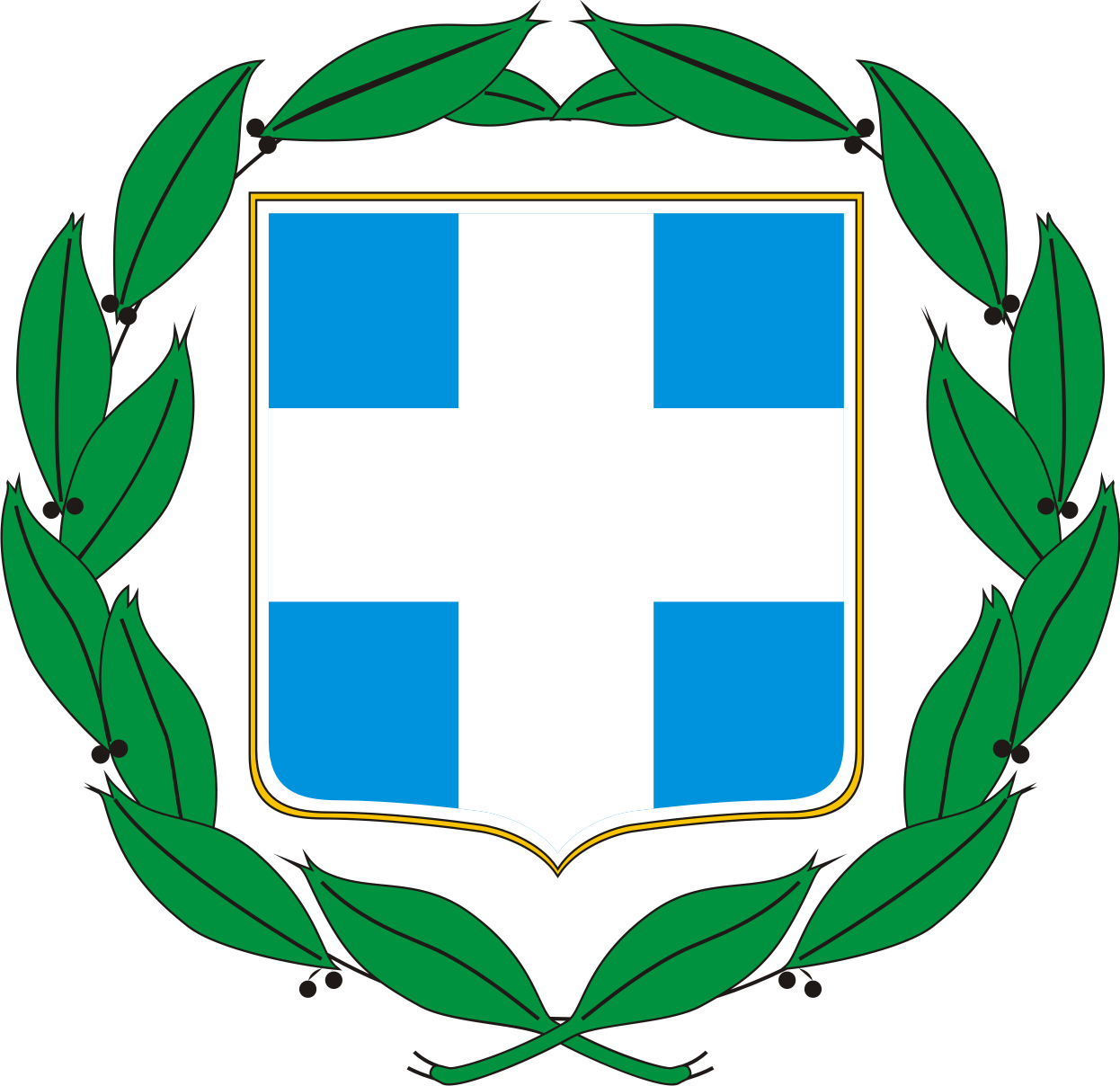Coat of arms of Greece

A small European state located in the southern part of the Balkan Peninsula, it is known for its thousand-year history, cultural monuments, architecture and deep-thinking philosophers. The state symbol, the coat of arms of Greece, surprises, on the one hand, with the ingenious simplicity of the external image, on the other, with the complexity of the interpretation of its individual elements.
Coat of arms of the winners
The main emblem of the country depicts: a shield of a beautiful azure color; silver cross; wreath of laurel leaves. Each of them has its own symbolic meaning, for example, a shield on the coat of arms, decorated with a drawing, at all times became the personification of the strength of the state, its military valor and glory. The cross, on the one hand, is an ornament of a military shield, on the other, and in itself is a symbol indicating Orthodoxy, the main religion of the country. There is no need to talk about the meaning of the laurel wreath at all, any person knows that such wreaths were received by the winners. And not only great athletes who participated in the Olympic Games, but also scientists and creative professionals.
Main colors
The Greek coat of arms is also distinguished by the fact that there are several colors for its execution. The main two tones are azure and silver. But sometimes you can see, which is quite acceptable, instead of azure - blue, and instead of silver - white. The Greek Armed Forces received the right to represent the coat of arms, on which the laurel wreath is depicted using gold paint.
Ancient Greek stories
The states that existed on the territory of modern Greece for centuries were ahead of the planet in many ways, including the presence of official symbols and emblems.
Much has remained behind the veil of time, and it is unlikely that it will ever become known to historians. But already in the 19th century, the regional government of Greece sealed its documents with an official seal, on which famous iconic persons were depicted: an owl, a symbol of the capital, and Athena, the goddess of wisdom.
The country, which gained independence in 1821, immediately acquired a new emblem, a drawing of the phoenix bird, known for its ability to resurrect from the ashes, appeared on the coat of arms of the Hellenic republic.
During the reign of King Otto, a stylized union of the coats of arms of Greece and Bavaria was used as the country's official emblem. This tradition was continued during the reign of the following representatives of the monarchy: the Glucksburg dynasty, King George II.
Everything changed dramatically with the second coming of the Glucksburg dynasty (1935-1973), when the familiar azure shield with a silver cross appeared.


